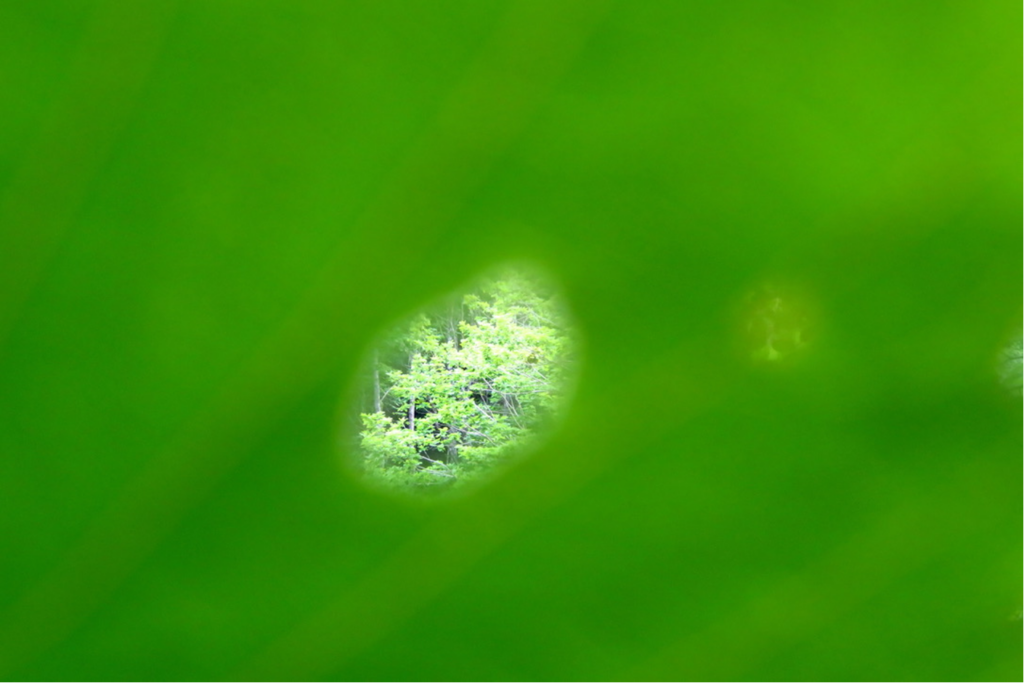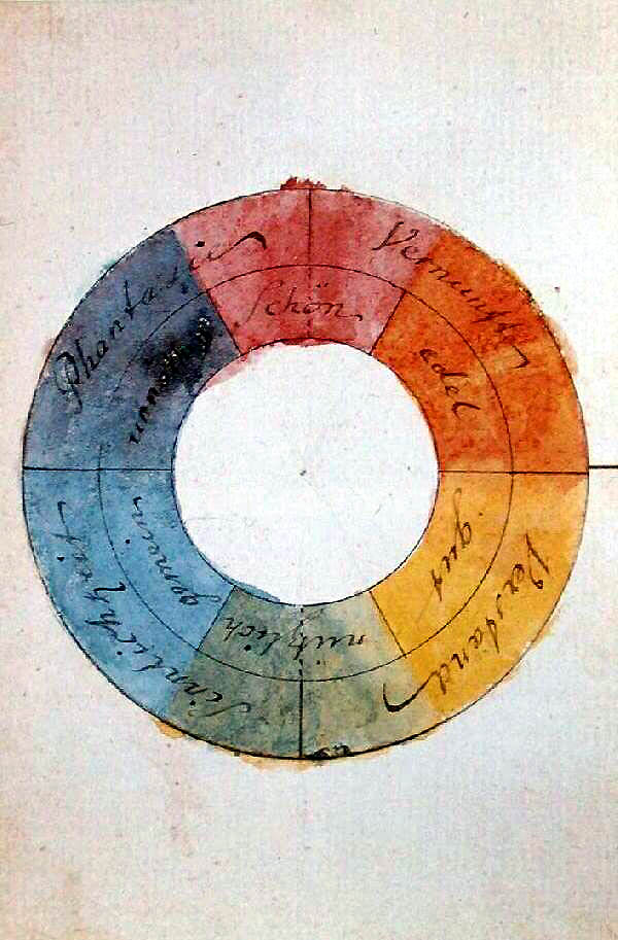With the green lute ribbon
(Poet's title: Mit dem grünen Lautenbande)
Set by Schubert:
D 795/13
[October-November 1823]
Part of Die schöne Müllerin, D 795
»Schad um das schöne grüne Band,
Daww es verbleicht hier an der Wand,
Ich hab das Grün so gern.«
So sprachst du, Liebchen, heut zu mir,
Gleich knüpf ich’s ab und send es dir.
Nun hab das Grüne gern.
Ist auch dein ganzer Liebster weiß,
Soll Grün doch haben seinen Preis,
Und ich auch hab es gern.
Weil unsre Lieb ist immer grün,
Weil grün der Hoffnung Fernen blühn,
Drum haben wir es gern.
Nun schlinge in die Locken dein
Das grüne Band gefällig ein,
Du hast ja’s Grün so gern.
Dann weiß ich, wo die Hoffnung grünt,
Dann weiß ich, wo die Liebe thront,
Dann hab ich’s Grün erst gern.
“What a shame about that beautiful green ribbon
Fading here on the wall,
I like green so much!”
That is what you said to me today, my love;
I shall immediately untie it and send it to you:
Now you can enjoy something green!
Even if your beloved is completely white,
Green should still be valued,
And I like it too.
Because our love is ever green,
Because the distant places of hope turn green as they blossom,
That is why we like it.
Now tie it around your locks
So that the green ribbon looks good on you,
Since you like green so much.
Then I shall know where hope turns green,
Then I shall know where love reigns
Then I shall like green for the first time.
All translations into English that appear on this website, unless otherwise stated, are by Malcolm Wren. You are free to use them on condition that you acknowledge Malcolm Wren as the translator and schubertsong.uk as the source. Unless otherwise stated, the comments and essays that appear after the texts and translations are by Malcolm Wren and are © Copyright.
☙
Themes and images in this text:
Fading and losing colour Green Hair Hope Mills Near and far White
At the end of ‘Pause‘ we heard the stirring effect on the young miller of the flapping green ribbon catching the strings of his lute. Was the sigh that emerged just an echo of his previous pain or was it the prelude to new songs? We now have the answer. The break is over and he is singing again. Unfortunately, though, we are not at all sure if we can believe anything he says.
We could read the title of this text (‘Mit dem grünen Lautenbande’) as meaning something like ‘joining in with the green lute ribbon’. The whole thing would therefore be a song he sings to himself based on what he would do and say IF the miller girl said anything about the ribbon. It would be a continuation of his own sighing, sung to the accompaniment of ribbon on lute. Or, we might read the title as referring to a note that he decides to send along with the ribbon (in which case she possibly did make the comment attributed to her); he is simply sending it ‘with the green lute ribbon’.
Whether or not she saw the ribbon and commented on it, there can be no doubt that it is fading and we can be fairly certain that this has symbolic significance. One of the primary connotations of the colour green in the German-speaking lands is ‘hope’. The idea that ‘hope is green’ (or, as in the third stanza here, that ‘hope greens’ – ‘die Hoffnung grünt’) seems to be based on the almost universal association of green with nature and fertility. If green is hope, the fading colour represents declining hope. The young man spends three stanzas trying to associate his beloved with the colour green and telling himself that he is justified in liking the colour. Does he have grounds for hope?
He contrasts green with white. Even if your beloved is totally white, he says, do not undervalue green. His own ‘beloved’ is white in a number of senses. She is blond. She may usually dress in white. She is in a mill, so runs the occupational hazard of being covered in flour at times. She is also a blank sheet on which he is projecting his ideas of a beloved and is now trying to add some colour to the image.
His attitude has changed since the earlier poems in the cycle, where the predominant colour was blue. The blue of the sky and the water was reflected in the beloved’s blue eyes. He wanted to plant blue forget-me-nots outside her window. He is now hoping that she will wear a green ribbon to symbolise their ‘evergreen’ love. As yet, there is nothing to indicate what has brought about this change in the colour scheme.

☙
Original Spelling and note on the text Mit dem grünen Lautenbande »Schad' um das schöne grüne Band, Daß es verbleicht hier an der Wand, Ich hab' das Grün so gern!« So sprachst du, Liebchen, heut zu mir; Gleich knüpf' ich's ab und send' es dir: Nun hab' das Grüne gern! Ist auch dein ganzer Liebster weiß, Soll Grün doch haben seinen Preis, Und ich auch hab' es gern. Weil unsre Lieb' ist immer grün, Weil grün der Hoffnung Fernen blühn, Drum haben wir es gern. Nun schlinge in die Locken dein Das grüne Band gefällig ein, Du hast ja's Grün so gern. Dann weiß ich, wo die Hoffnung grünt1, Dann weiß ich, wo die Liebe thront, Dann hab' ich's Grün erst gern. 1 Schubert appears to have changed the original 'wohnt' (lives) to 'grünt' (turns green)
Confirmed with Gedichte aus den hinterlassenen Papieren eines reisenden Waldhornisten. Herausgegeben von Wilhelm Müller. Erstes Bändchen. Zweite Auflage. Deßau 1826. Bei Christian Georg Ackermann, page 29; and with Sieben und siebzig Gedichte aus den hinterlassenen Papieren eines reisenden Waldhornisten. Herausgegeben von Wilhelm Müller. Dessau, 1821. Bei Christian Georg Ackermann, page 30.
To see an early edition of the text, go to page 30 Erstes Bild 40https://download.digitale-sammlungen.de/BOOKS/download.pl?id=bsb10115224
Speculative note on the background to the colour symbolism in Müller´s Die schöne Müllerin
Die schöne Müllerin is structured around the tension between green and blue, with some references to white. The primary associations in the cycle connect blue with water (blue eyes cry and blue flowers are covered in dew, another form of tears) and green with the forest (the domain of the hunter, the rival) and it is tempting to see blue and green as representing the extremes of the young man’s bipolar temperament (with the blue of the sky and the little river expressing his optimism and the ‘evil’ green being the image of his jealosy and despair). However, things are clearly not as simple as that. The river is the scene of his death, and green remains the colour of hope. It is perhaps better to think of the colours as complementary rather than opposites. Blue is an element of green, after all.

| red | schön / beautiful |
| orange | edel / noble |
| yellow | gut / good |
| green | nützlich / useful |
| blue | gemein / common |
| violet | unnötig / unnecessary |
| red – orange | Vernunft / reason |
| yellow – green | Verstand / intellect – understanding |
| green – blue | Sinnlichkeit / the sensual – the senses |
| violet – red | Phantasie / imagination |
In Goethe’s major work on the phenomenology of colour perception (Zur Farbenlehre, 1810) green was called ‘useful’ and blue was ‘common’, but they occupied the same part of the colour wheel, in a region which he claimed was associated with sensory perception (Sinnlichkeit). Goethe argued that the other colours (violet, red, orange, yellow) were linked in the human mind with less ‘sensual’ or ‘sensory’ processes (such as fantasy and rationality). Even if Müller was familiar with Goethe’s theory it is doubtful that he used any of it in creating the figure of the young miller.
Perhaps one text that did have an effect on the poet was ‘Die Lieblingsfarben’ by J. G. Fellinger. This was published in 1818 but had been written in 1814 at the moment of victory of the allies against Napoleon. Like Fellinger, Müller had played an active part in the wars of liberation. Perhaps he shared the same three favourite colours (blue, green and white) for the same reasons:
Die Lieblingsfarben
von J. G. Fellinger. 1814
Drey Farben lieb´ ich einzig nur:
Des Äthers Blau, das Grün der Flur;
Der Wahrheit und der Unschuld Weiß
Verdient vor allem Schmuck den Preis.
Drey Farben haben sich vermählt,
Sie glänzen fort vom Po zum Belt,
Und was du Großes je erblickt´,
Hat mit den Farben sich geschmückt.
Das tiefe Blau am Himmel lacht
Ins Herz dir Ruhe Tag und Nacht,
Und süße Liebe für und für Winkt
Linchens blaues Auge dir.
Wo stilles Grün den Blick erfreut,
Da ist der Frühling auch nicht weit,
Die Hoffnung kohr mit weichem Sinn
Für sich das schöne Immergrün.
Der Unschuld und der Rechtlichkeit
War stets das zarte Weiß geweiht;
Denn wie die Klarheit Gottes rein
Muß fleckenlos das Gute seyn.
Die weiße Friedensfahne weht
Auf Capets stolzer Burg erhöht,
Und jedes Künstlers Griffel mahlt
Nur weiß die edlere Gestalt.
Die Farben weiß, und blau und grün,
Sie sind der Menscheit fürderhin
Ein freundliches Gemisch der Zeit,
Die sich in selben froh erneut.
Die Hoffnung grünt, der Himmel wacht,
Es schimmert hell der Wahrheit Macht,
Und was im Dunkel sich verlor,
Quillt aus den Farben frisch empor.
Der Teutsche schmücke feyerlich
Mit diesen holden Farben sich;
Er achte nur die hohe Drey,
In ihren Zeichen ward er frey,
Denn Rusßlands Grün und Preußens Blau
Verschmolz mit Östreichs Weiß genau,
Und sieh! der Regenbogen stand
Verheißend ob dem Vaterland.
D´rum lieb´ ich nur und halte noch
Das Grün und Blau und Weiß so hoch.
Bis einst dem Auge, todesblind,
Das ganze Farbenspiel zerrinnt.
My favourite colours
by J. G. Fellinger. 1814
I now love only three colours:
The blue of the ether, the green of the fields;
The white of truth and innocence
Are worth a price greater than any jewel.
Three colours have been married,
They are shining forth from the Po to the Danish straits,
And anything great that you have ever seen
Has been adorned with those colours.
Deep blue smiles in the sky
Offering rest to your heart day and night,
And sweet love for ever and ever
Shines out as a signal to you from Linchen’s blue eyes.
Where quiet green delights the gaze,
Spring cannot be far away,
With a tender attitude spring chose
The beautiful evergreen for itself.
Innocence and justice
Have always been devoted to tender white;
Since, like the pure clarity of God,
Goodness has to be spotless.
The white flag of peace is now flying
Above the proud castle of the Capetians,
And the pencil of every artist is portraying
The noble features only as white.
The colours white, blue and green
From now on will be seen by humans
As a friendly mixture of time,
Which happily renews itself.
Hope greens, the heavens are awake,
The power of truth shines bright
And whatever was lost in darkness
Pours freshly out of the colours.
In celebration the Germanic man adorns himself
In these beauteous colours;
He only values the exalted three,
Under their sign he became free.
Because Russia’s green and Prussia’s blue
Melted in with Austria’s white,
And look! the rainbow appeared
Offering its promise over the fatherland.
That is why I only love and I still hold
In such high esteem green, blue and white.
Until the day comes when my eyes, blind in death,
Can no longer behold the whole colour spectacle.
Published in Der Wanderer. Unterhaltungsblatt 116. 9th October 1818 Vienna


